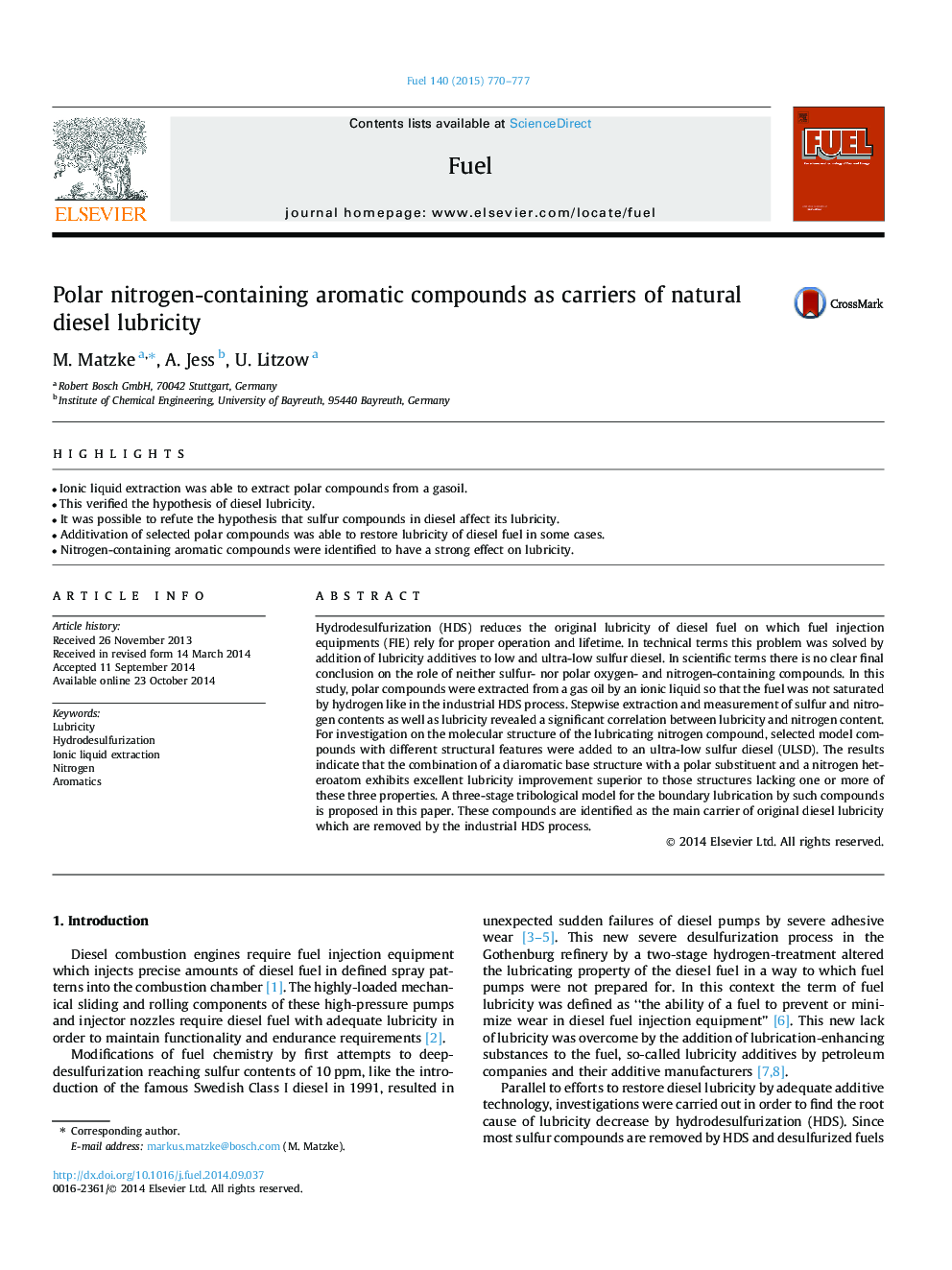| Article ID | Journal | Published Year | Pages | File Type |
|---|---|---|---|---|
| 6636485 | Fuel | 2015 | 8 Pages |
Abstract
Hydrodesulfurization (HDS) reduces the original lubricity of diesel fuel on which fuel injection equipments (FIE) rely for proper operation and lifetime. In technical terms this problem was solved by addition of lubricity additives to low and ultra-low sulfur diesel. In scientific terms there is no clear final conclusion on the role of neither sulfur- nor polar oxygen- and nitrogen-containing compounds. In this study, polar compounds were extracted from a gas oil by an ionic liquid so that the fuel was not saturated by hydrogen like in the industrial HDS process. Stepwise extraction and measurement of sulfur and nitrogen contents as well as lubricity revealed a significant correlation between lubricity and nitrogen content. For investigation on the molecular structure of the lubricating nitrogen compound, selected model compounds with different structural features were added to an ultra-low sulfur diesel (ULSD). The results indicate that the combination of a diaromatic base structure with a polar substituent and a nitrogen heteroatom exhibits excellent lubricity improvement superior to those structures lacking one or more of these three properties. A three-stage tribological model for the boundary lubrication by such compounds is proposed in this paper. These compounds are identified as the main carrier of original diesel lubricity which are removed by the industrial HDS process.
Related Topics
Physical Sciences and Engineering
Chemical Engineering
Chemical Engineering (General)
Authors
M. Matzke, A. Jess, U. Litzow,
